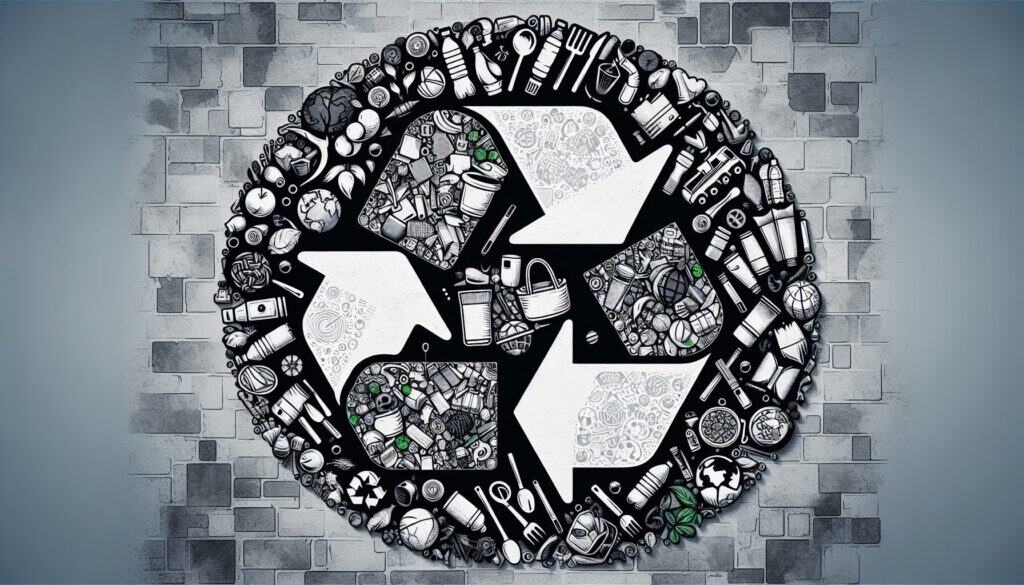Ermittlung und Beseitigung von Aktivitäten, die Ressourcen verbrauchen, aber keinen Mehrwert für den Kunden schaffen.
- Methodologien: Kunden & Marketing, Wirtschaft, Lean Sigma, Herstellung, Projektmanagement, Qualität
Abfallvermeidung (Muda)

Abfallvermeidung (Muda)
- Kontinuierliche Verbesserung, Wirkungsgrad, Schlanke Fertigung, Schlanke Produktion, Prozessverbesserung, Sieben Einöden, Wertstrom-Mapping, Strategien zur Abfallbeseitigung, Abfallreduzierung
Zielsetzung:
Wie es verwendet wird:
- Part of the Lean philosophy, Muda focuses on categorizing and systematically removing non-value-adding activities from processes. The common sieben Abfälle (often expanded to eight) are: Transportation, Inventory, Motion, Waiting, Overproduction, Over-processing, and Defects (plus Non-utilized Talent).
Vorteile
- Führt zu höherer Effizienz, geringeren Kosten und besserer Qualität; erhöht die Kundenzufriedenheit durch Konzentration auf den Wert; vereinfacht Prozesse; befähigt Mitarbeiter, Verschwendung zu erkennen und zu beseitigen.
Nachteile
- Es kann schwierig sein, alle Formen von Verschwendung zu ermitteln, insbesondere in nicht-verarbeitenden Bereichen; erfordert einen Kulturwandel hin zu kontinuierlicher Verbesserung; die Beseitigung einiger "Verschwendungen" (z. B. notwendige Inspektionen) ohne sorgfältige Prüfung kann sich nachteilig auswirken.
Kategorien:
- Wirtschaft, Lean Sigma, Herstellung, Problemlösung, Qualität
Am besten geeignet für:
- Verbesserung von Effizienz und Rentabilität durch systematische Beseitigung nicht wertschöpfender Tätigkeiten aus jedem Prozess.
Waste Reduction (Muda) methodology finds extensive applicability across diverse industries such as manufacturing, healthcare, software development, and logistics, where the demand for efficiency and quality is paramount. In manufacturing settings, for example, organizations can identify and minimize overproduction by optimizing production schedules and aligning output with actual market demand; in healthcare, reducing patient wait times and unnecessary steps in workflows can substantially enhance service delivery and patient satisfaction. This approach is particularly effective during the design and development phases of a product, where teams can analyze workflows and processes to uncover inefficiencies that may lead to cost overruns or delays. Participants typically include cross-functional teams composed of engineers, designers, quality assurance professionals, and management, who collaboratively assess processes to identify wasteful activities. By involving employees at all levels, organizations cultivate a culture of continuous improvement, where individuals are encouraged to contribute their ideas for eliminating inefficiencies. This methodology not only leads to direct cost reductions through decreased resource utilization and waste but also enhances product quality by reducing defects and rework, creating a win-win scenario for both the business and its customers. Engaging in this systematic waste reduction builds resilience, enabling organizations to adapt more readily to market changes while maintaining a focus on delivering value.
Die wichtigsten Schritte dieser Methodik
- Identify value from the customer's perspective.
- Map the value stream and visualize current processes.
- Evaluate each step to categorize waste according to the seven wastes.
- Develop a plan to eliminate non-value-adding activities.
- Implement changes to improve flow and create a more efficient process.
- Measure the impact of changes and analyze the results.
- Sustain improvements through continuous monitoring and adjustments.
Profi-Tipps
- Conduct root cause analysis for each waste category to identify the underlying issues and eliminate them effectively.
- Implement Continuous Improvement (Kaizen) initiatives that encourage team members to identify and propose waste reduction strategies regularly.
- Utilize Value Stream Mapping to visualize processes and uncover hidden waste, enhancing decision-making for process improvements.
Verschiedene Methoden lesen und vergleichen, Wir empfehlen die
> Umfassendes Methoden-Repository <
zusammen mit den über 400 anderen Methoden.
Ihre Kommentare zu dieser Methodik oder zusätzliche Informationen sind willkommen auf der Kommentarbereich unten ↓ , sowie alle ingenieursbezogenen Ideen oder Links.
Historischer Kontext
1950
1958
1960
1960
1960
1960
1963
1950
1950
1960
1960
1960
1960
1962
1970
(wenn das Datum nicht bekannt oder nicht relevant ist, z. B. "Strömungsmechanik", wird eine gerundete Schätzung des bemerkenswerten Erscheinens angegeben)















Verwandte Artikel
Fragebögen zu muskuloskelettalen Beschwerden
Multivariate Tests (MVT)
Mehrfache Regressionsanalyse
Motion-Capture-Systeme
MoSCoW-Methode
Moods Median-Test